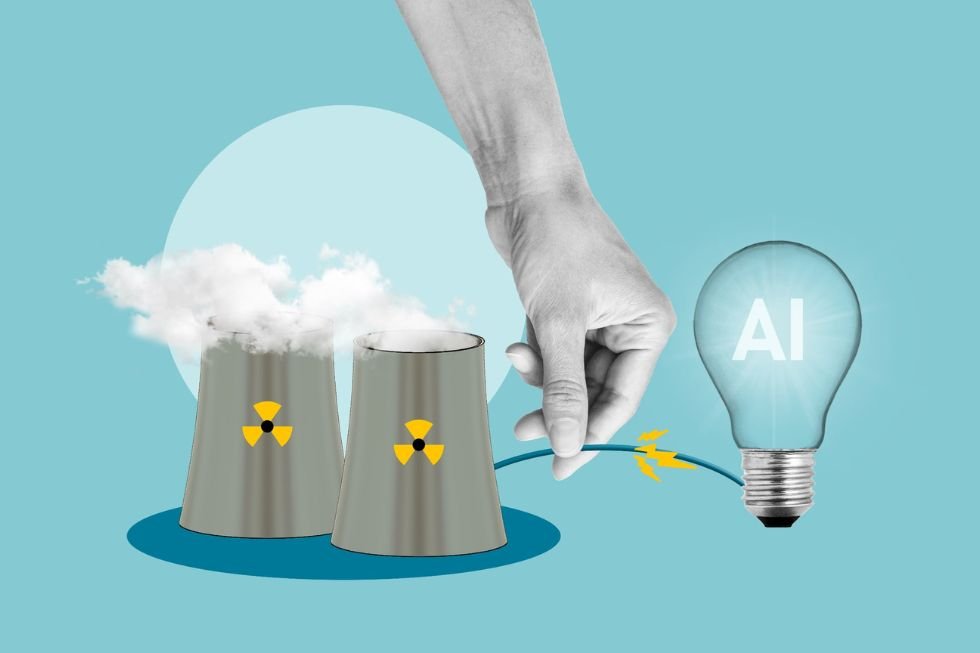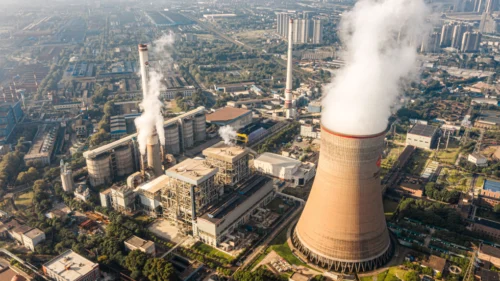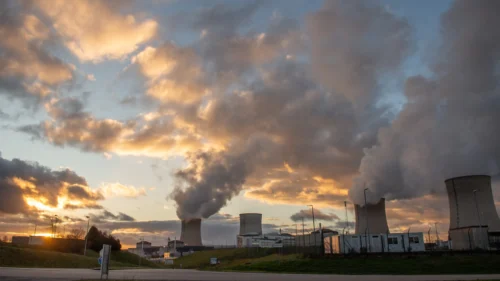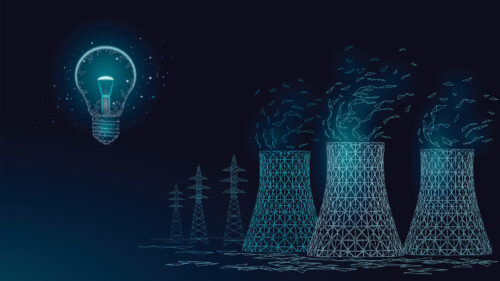Artificial intelligence (AI) is progressing faster than any technology in recent memory. AI algorithms are out-thinking radiologists, composing symphonies and predicting wildfires. But while the spotlight shines on what AI can do, one urgent question lingers: what’s going to power it? The answer might be an unlikely one: nuclear energy.
The intelligence revolution has an energy problem
Training a single large AI model consumes more electricity than 100 American homes use in a year. The International Energy Agency (IEA) estimates global data centers devoured 460 terawatt-hours (TWh) of electricity in 2022, and that number could more than double by 2026. In 2024, AI servers accounted for 24% of server electricity demand.
This is not just driven by Silicon Valley and Wall Street using AI. AI is quickly becoming essential globally, from agriculture in Kenya to logistics in Indonesia and disaster response in Bangladesh. But AI does not work without power. A climate model predicting hurricane paths in the Caribbean? A diagnostic system identifying heart defects in infants? These miracles of machine learning are meaningless if the servers powering them go dark.
How nuclear energy is ideal for AI
Nuclear energy can power AI sustainably and more effectively. Unlike fossil fuels, nuclear power does not emit carbon. Unlike solar and wind, it does not sleep.
Advances in fast neutron reactors now allow us to recycle fuel, extracting up to 70 times more energy from the same material and reducing the remaining waste by up to 96%. This remaining waste has also significantly reduced radiotoxicity and can be stored safely in deep geological repositories, such as Finland’s Onkalo, which was built to endure for millennia.
There is also a growing geopolitical dimension to this conversation. As nations integrate AI into defense systems, border monitoring and biotech infrastructure, energy security becomes a key component of national security. Nuclear power offers not just carbon-free stability but strategic hedging space. Uranium stockpiles are key economic exports for source countries, making them less likely to be used in economic bargaining.
Further, unlike oil or natural gas, nuclear supply chains are relatively less vulnerable to geopolitical flashpoints. Countries with nuclear power plants typically have strategic uranium reserves or long-term purchase agreements that mitigate the impact of short-term geopolitical disruptions.
As the global nuclear energy market grows, so does the diversification of uranium sources. Emerging uranium suppliers such as Uzbekistan, Namibia, and Niger are expanding and offering alternative sources that can mitigate the geopolitical uncertainty in any one region.
Operationally, Small Modular Reactors (SMRs), now under development from the UK to Canada and Indonesia, could be deployed near industrial clusters, AI data centers, and innovation parks. The size and efficiency of SMRs allow nuclear power to be built in nations without legacy nuclear infrastructure. They also provide strategic deterrence against grid failure and cyber threats by decentralizing power generation, incorporating cybersecurity measures by design, and ensuring operational resilience.
As the world realigns into energy blocs — clean versus dirty, stable versus vulnerable — countries that master AI and nuclear power will shape the terms of the next century.
The real cost of nuclear energy
The bigger risk is not nuclear energy; it is not building it fast enough. Delay means AI projects stalling, emissions rising and critical infrastructure stuck on unstable grids. Yes, nuclear power plants are more expensive upfront than coal plants. However, over the full lifetime of a plant, nuclear energy becomes competitive with and often cheaper than coal and renewable energy sources.
The fear surrounding nuclear energy is often emotional, not empirical. The aftermath of Chernobyl and Fukushima led to global reforms that emphasized continuous safety training, transparency and rigorous adherence to safety protocols.
International standards, including oversight processes, set by organizations like the International Atomic Energy Agency (IAEA) and the World Association of Nuclear Operators (WANO), have been strengthened, ensuring that nuclear power plants are built and operated according to global best practices. Modern reactors have passive safety features and are designed to be inherently stable and self-regulating, significantly reducing the likelihood of a catastrophic failure.
According to Our World in Data, though higher than solar power, nuclear has the second-lowest mortality rate per unit of energy produced, even lower than wind or hydropower. It is safer than some of the renewables we romanticize and exponentially safer than the fossil fuels we continue to burn.
To change the story, we need to reframe the stakes: nuclear energy is not about yesterday’s fears. It is about tomorrow’s potential. It is not a necessary evil but rather a strategic enabler of progress.
Nuclear energy is not just part of the solution. It may be the only energy source capable of matching the intelligence we are building with the infrastructure it demands. If we want to be serious about our AI future, it is time to power it like we mean it.
[Kaitlyn Diana edited this piece.]
The views expressed in this article are the author’s own and do not necessarily reflect Fair Observer’s editorial policy.
Support Fair Observer
We rely on your support for our independence, diversity and quality.
For more than 10 years, Fair Observer has been free, fair and independent. No billionaire owns us, no advertisers control us. We are a reader-supported nonprofit. Unlike many other publications, we keep our content free for readers regardless of where they live or whether they can afford to pay. We have no paywalls and no ads.
In the post-truth era of fake news, echo chambers and filter bubbles, we publish a plurality of perspectives from around the world. Anyone can publish with us, but everyone goes through a rigorous editorial process. So, you get fact-checked, well-reasoned content instead of noise.
We publish 3,000+ voices from 90+ countries. We also conduct education and training programs
on subjects ranging from digital media and journalism to writing and critical thinking. This
doesn’t come cheap. Servers, editors, trainers and web developers cost
money.
Please consider supporting us on a regular basis as a recurring donor or a
sustaining member.
Will you support FO’s journalism?
We rely on your support for our independence, diversity and quality.








Comment